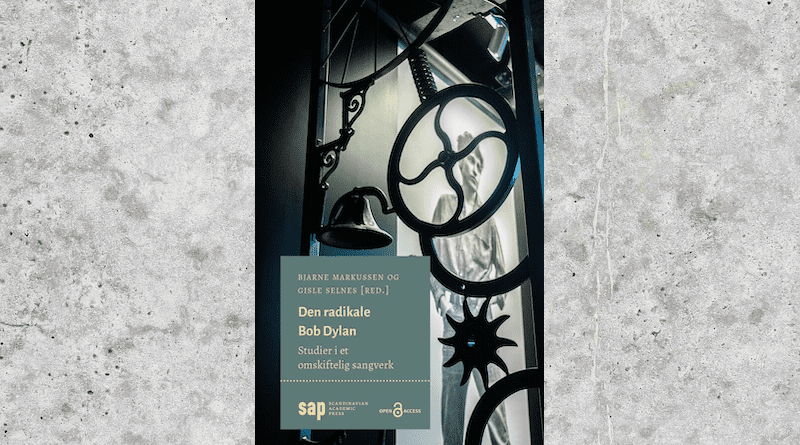‘The Greatest Lyricist Of Our Time?’ – New Book
Bob Dylan’s radicalism is political, artistic and religious, claims Professor Bjarne Markussen from the Univeristy of Agder in UiA. He is the editor of a new book about the American singer and poet.
“Bob Dylan’s songs are in continuous dialogue with great traditions, from the American song tradition to classical and modern literature – and not least the Bible. Dylan goes to the roots, but also breaks away from them,” says Markussen.
Together with Professor Gisle Selnes at the University of Bergen, he edited the book Den radikale Bob Dylan. Studier i et omskiftelig sangverk (The radical Bob Dylan. Studies of a changing oeuvre), which has been published by Scandinavian Academic Press. The book is freely available to download and read (in Norwegian).
Academic books on Bob Dylan could fill a small library. Nevertheless, there has been a lack of books concerned with the radical side of him, Markussen thinks.
Three times radical
Dylan’s work is radical in the political, artistic and religious sense, according to the book. He is aware of the traditions, but also breaks them.
Artistically, he is an artist who has broken with the public’s expectations and the dominant taste of the time throughout his career, according to Markussen. He has also significantly reworked his own songs through 3,800 concerts and says himself that “My work is a moving thing”.
Dylan started his career in the countercultural environment of New York’s Greenwich Village, writing protest songs about racial discrimination, war, injustice and miscarriages of justice.
“These songs are at the core of the protest music tradition of the left. But songs of protest can also have several layers. ‘Blowin’ in the Wind’ is the most famous example. The song expresses a clear opposition to the war and racism of the time, but also goes in the direction of a more timeless search for truth like the spiritual genre,” Markussen says.
Bob Dylan is also radical in a religious sense, the professor thinks.
“Dylan goes to great lengths in his rejection of a worldly understanding of reality. There are apocalyptic features in many of his songs, but they also contain a belief that God is present and that there is hope. The social engagement and religious engagement are linked. Throughout his career he has been oscillating between doom and hope,” says Markussen.
Bringing together many disciplines
The book has contributions from thirteen different writers. They come from many different fields, as well as from outside of academia. This reflects the working method of the Song Lyrics research group, which Markussen leads together with his colleague Michael Prince, and from which the book originated.
The group consists of literary scholars, musicologists, musicians and composers. In addition to the book about Bob Dylan, the group has also just published an anthology about the theory, method and genres of song lyrics, while the anthology Flytsoner is about flow and rap lyrics (both in Norwegian).
The aim of the group is to explore song lyrics from various genres and eras, and to elevate song lyrics from the relatively low status it has been afforded within the literary studies field.
“Everyone has a relationship with songs, from football anthems to pop songs to hymns. Song lyrics has an enormous range, both historically and in terms of genre,” says Markussen.
New generations
Markussen discovered Dylan when he was in secondary school in the 1980s.
“The Dylan I encountered was as an eighties rock musician. His voice fascinated me, the melodies were good, and the lyrics were on a completely different level from other pop songs at the time. Lines such as ‘I and I, in creation where one’s nature neither honors nor forgives’ were something to chew on,” he says.
By the 1980s, Dylan had already been through many phases. After starting out as a folk artist, he moved on to rock, country and gospel before experimenting with synths and electronic drums. In the 2010s, he recorded three albums of Frank Sinatra hits, before striking out with what Markussen calls one of his best albums, Rough and Rowdy Ways, in 2020 at the age of 79.
It is easy to think that Bob Dylan’s music is reserved for the older generation. But Markussen sees hope for new generations of listeners as well.
“There will always be some young people who discover Bob Dylan. Such high quality does not expire. His status as the voice of his generation will probably fade as this generation dies out. But I think people will keep listening to Dylan a lot longer than most other contemporary artists.”

